On October 26th, The Series tackled the most pressing issue faced by AdTech today: addressability. We assembled a strong panel of 16 industry experts across brands, publishers, data companies, and AdTech to talk about the impact, strategies, and opportunities for innovation. Event recordings are available here. More than 932 invitees responded: 383 from AdTech, 170 from agencies, 139 from publishers, 94 from brands.
We took advantage of the event to survey our event attendees, most of whom are senior level decision makers, to gather and share industry sentiment. Altogether, 89 participants responded to eight essential questions about the future of addressability.
The respondents to the survey spanned a broad cross-section of industries, functional responsibilities, and seniority,


Many industry experts believe that answers to the addressability question will only become clear once the federal government has passed updated privacy laws to govern online activity, Among our respondents, there was a strong consensus that legislation would not pass till 2022 or later. However, 99% of respondents did believe that legislation would pass at some point.


Nearly half of our respondents pegged the iOS14 opt-in date to Q2, 2021. Only one in five thought the date would slip beyond that. So apparently, the market is taking Apple at its word that changes will be coming in early 2021.

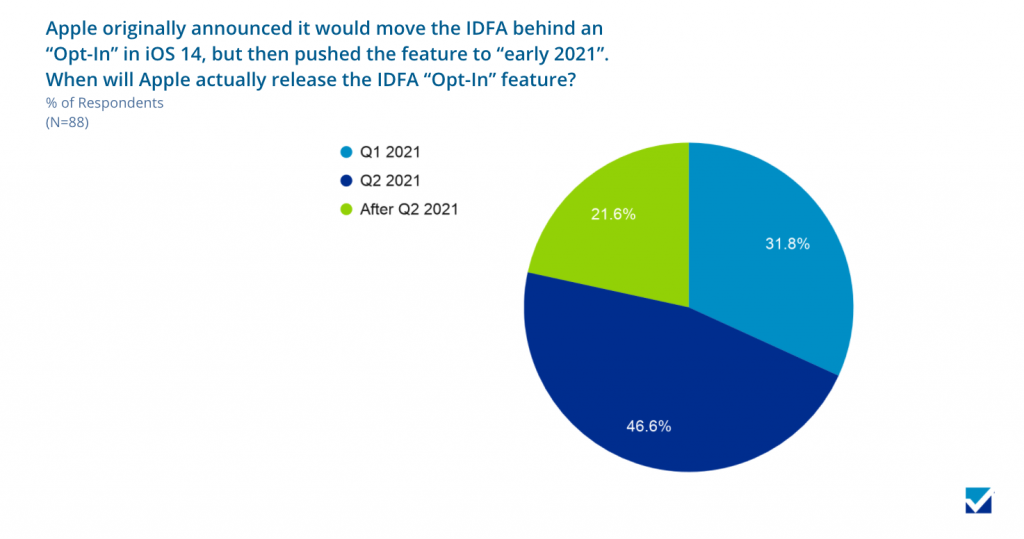
Many industry observers are convinced that iOS opt-in rates will be very low. Our event attendees appear to agree. All told, 70% of respondents thought that iOS opt-in rates would be below 40%. The industry sentiment is real.


A majority of our respondents believed that iOS 14 CPMs will drop 25-50% post opt-in.


Are the walled garden walls getting higher? Apparently so. Among our respondents, 60% thought that Google and Facebook will get more budget following the iOS 14 opt-in requirements. With their share of mobile ad dollars already at 60.3% per eMarketer, it is hard to believe that getting more market share is possible.

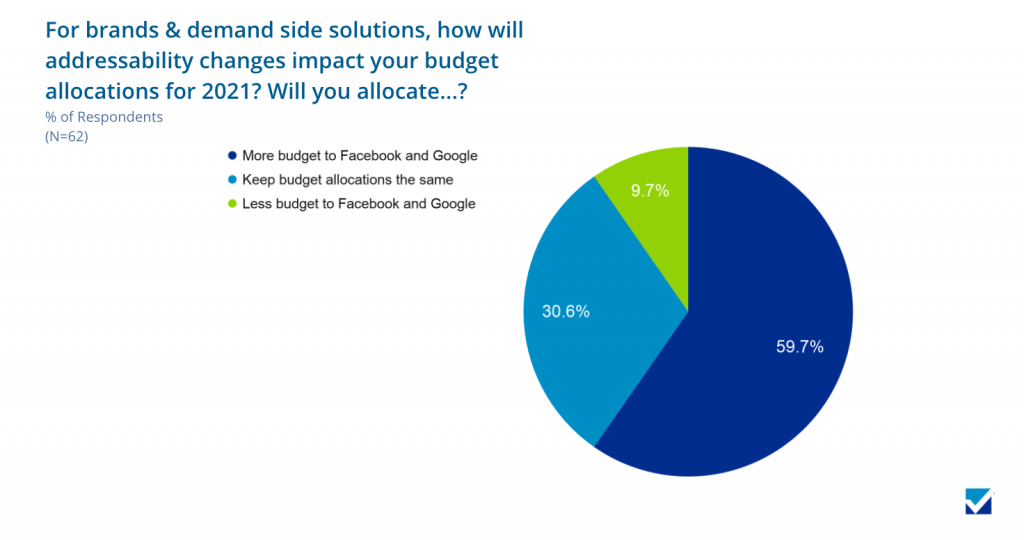
The big question is what identifiers will replace cookies and MAIDs in the days ahead. When we asked our survey participants, 82% of respondents felt that hashed emails were will fill the gap when MAIDs are degraded. And over half of them see IP addresses playing a central role.

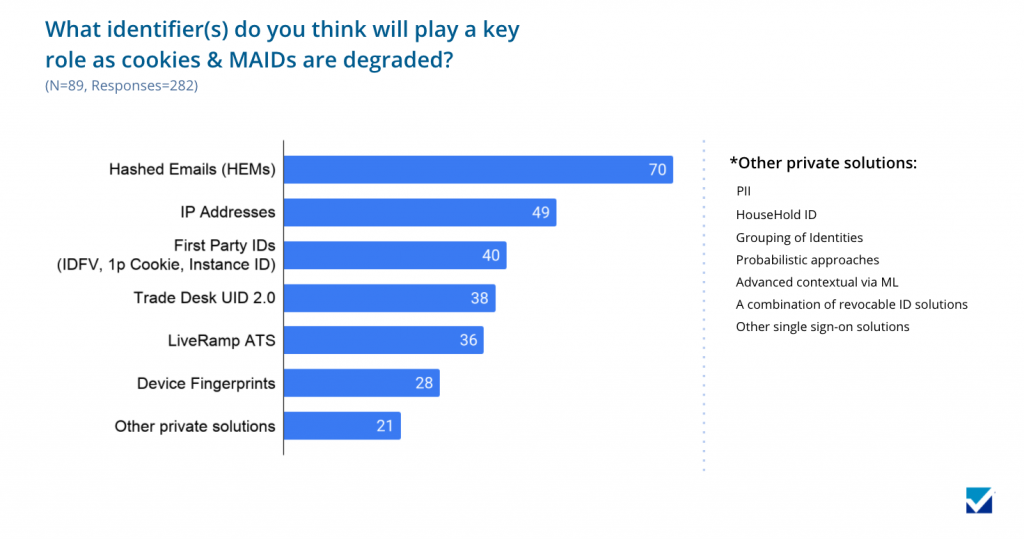
A new generation of addressability solutions is coming to the market to replace MAIDs and cookies. Is there one vendor with an edge over the others? Not to our attendees. Only 8% of respondents thought it would be a winner-take-all identity market.

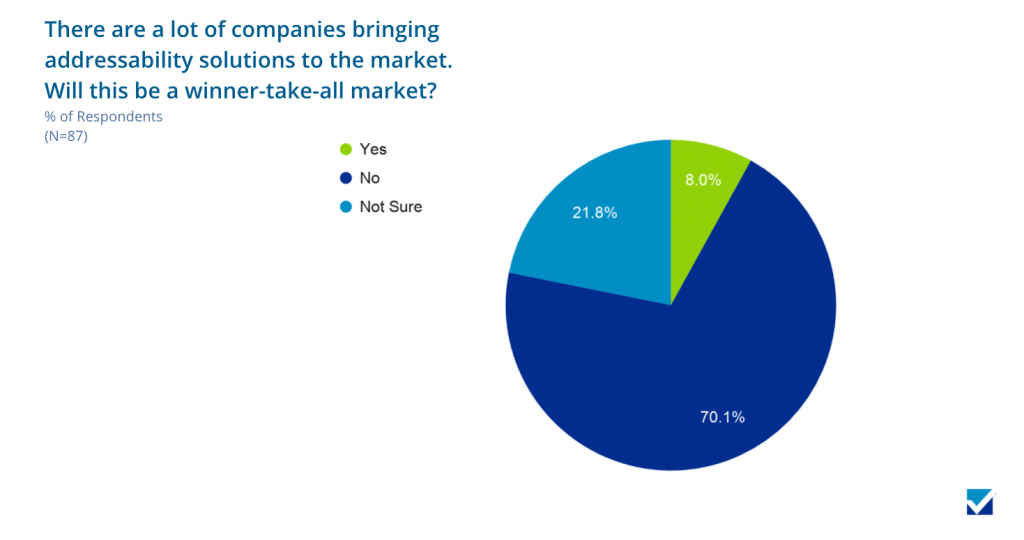
If, as most of our survey respondents believe, a minority of iOS users will choose to opt in, companies will need new ways to monetize, target, and measure. Based on our survey, no consensus has yet emerged on alternatives to IDFA. Respondents are trying a variety of approaches – and many remain unsure.

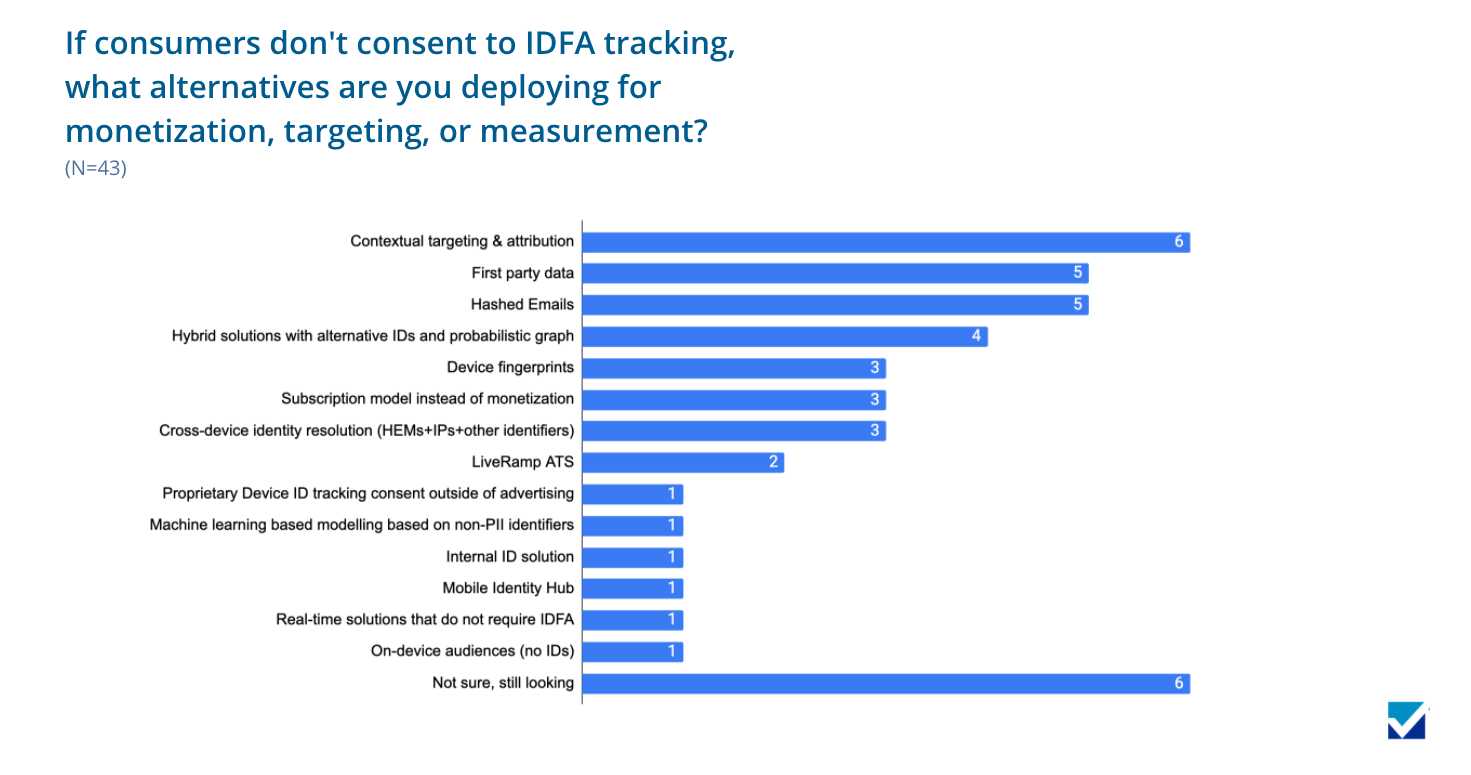
The Series event and the results of our survey have clarified the current state of the marketplace – and where we are headed. The industry has set expectations for the potential loss of addressability and ad revenue with the loss of cookies and MAIDs. While advertisers may have to rely more on walled gardens for mobile advertising, new solutions are being explored and evaluated, among which contextual targeting and HEM and IP address-based identity solutions are most valued.
While much uncertainty remains – and the real impact of IDFA opt-in won’t be felt for some time – TrueData is committed to staying ahead of our clients’ identity needs and working across the industry to find answers while safeguarding user privacy.
To keep up with all the changes, don’t miss The Series digital event on February 8th: Targeting and Addressability on Streaming TV and Audio. Save the date.



Subscribe For Updates